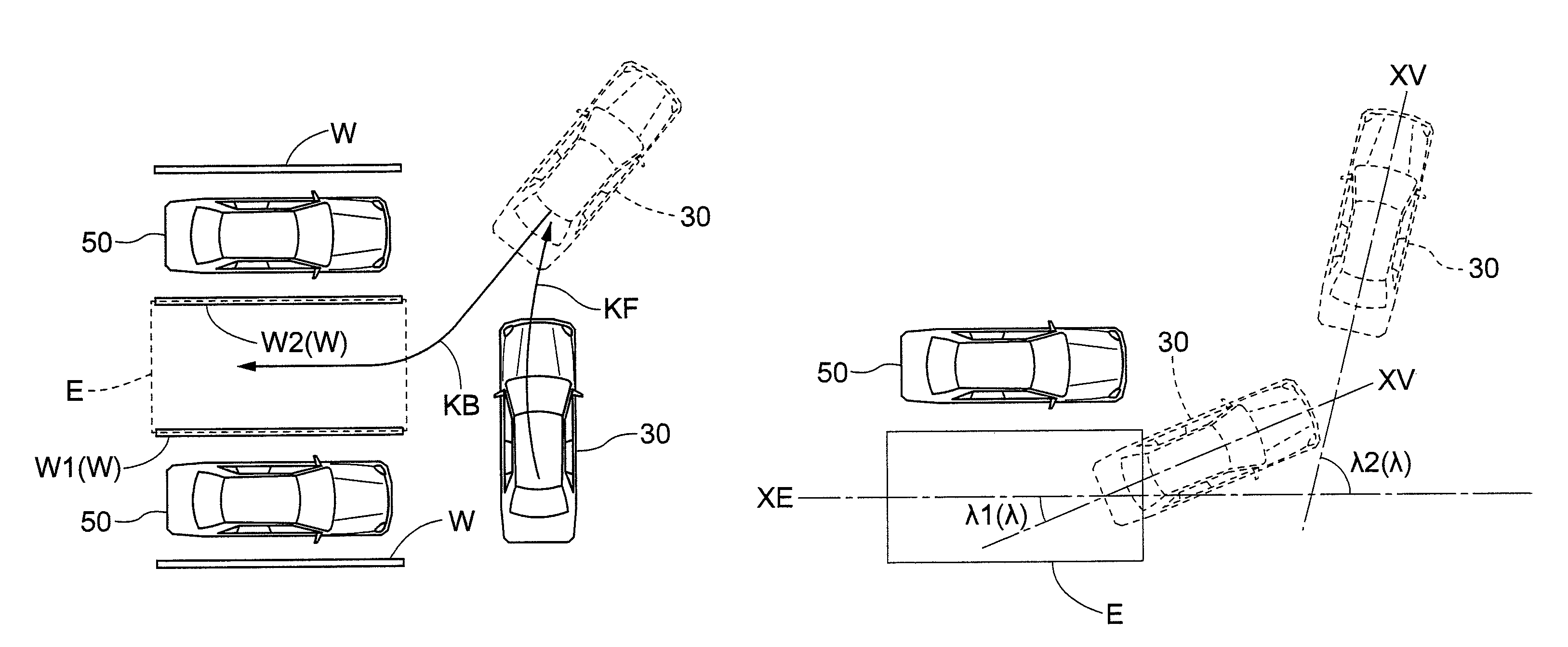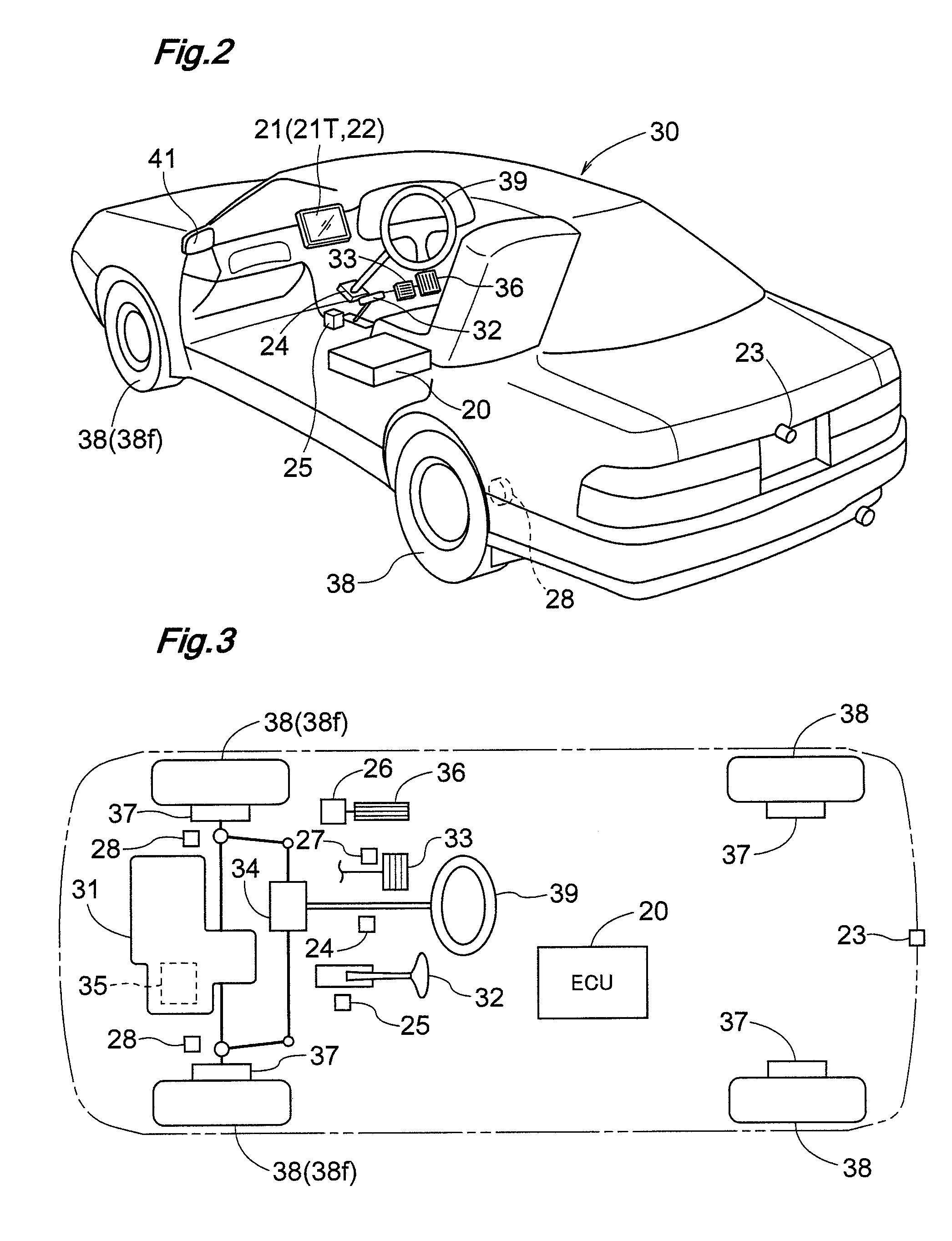Parking assistance device
a technology of assistance device and parking position, which is applied in the direction of pedestrian/occupant safety arrangement, television system, instruments, etc., can solve the problems of large error in the distance from the current position of the self-drive to the target position, and the inability to change the image according to the distance, etc., and achieve good visibility
- Summary
- Abstract
- Description
- Claims
- Application Information
AI Technical Summary
Benefits of technology
Problems solved by technology
Method used
Image
Examples
Embodiment Construction
[0032]Embodiments of the present invention will be described below on the basis of the drawings. FIG. 1 is a block diagram that schematically shows an sample configuration of the parking assistance device of the present invention; FIG. 2 is a perspective view that shows an example of a vehicle 30 provided with the parking assistance device of the embodiment; and FIG. 3 is a block diagram that schematically shows an example configuration of the vehicle 30.
[0033]The parking assistance device of the present invention comprises an ECU 20 as the central core. The ECU 20 is provided with an input-output interface 19 for inputting and outputting information, and a microprocessor or DSP (digital signal processor) for processing the information obtained from the input-output interface 19. It shall be apparent that part or all of the input-output interface 19 may be contained in such a processor. The ECU 20 comprises electrical circuits for which the processor is the central core component. T...
PUM
 Login to View More
Login to View More Abstract
Description
Claims
Application Information
 Login to View More
Login to View More - R&D
- Intellectual Property
- Life Sciences
- Materials
- Tech Scout
- Unparalleled Data Quality
- Higher Quality Content
- 60% Fewer Hallucinations
Browse by: Latest US Patents, China's latest patents, Technical Efficacy Thesaurus, Application Domain, Technology Topic, Popular Technical Reports.
© 2025 PatSnap. All rights reserved.Legal|Privacy policy|Modern Slavery Act Transparency Statement|Sitemap|About US| Contact US: help@patsnap.com



